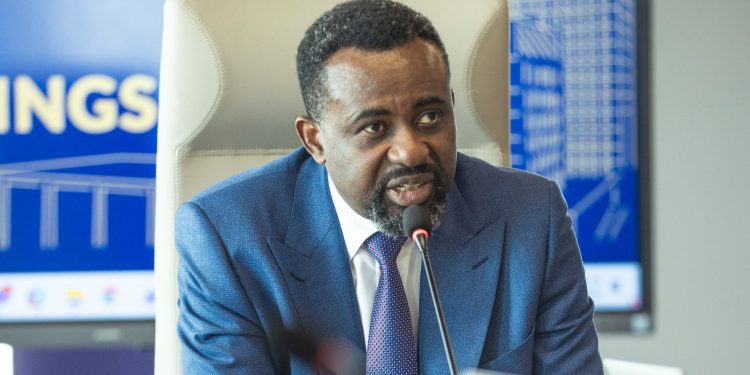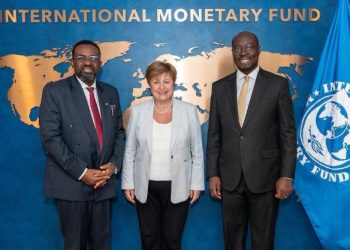The Bank of Ghana (BoG) says Ghana’s macroeconomic indicators are showing early signs of stability, but warns of persistent internal and external risks that could derail progress.
At the 124th Monetary Policy Committee (MPC) Meeting held in Accra, Governor Dr. Johnson Asiama acknowledged positive momentum in inflation management, currency strength, and investor sentiment—but stressed that vulnerabilities still threaten the broader economic outlook.
The macroeconomic update comes just days after the National Labour Commission (NLC) ordered striking university staff unions to return to work and the Finance Ministry approved revised allowances for members of the Senior Staff Association–University of Ghana (SSA-UoG), Federation of Universities Senior Staff Association of Ghana (FUSSAG), and Technical University Administrators’ Association of Ghana (TUAAG).
The allowance adjustments, approved on May 21, 2025, take retrospective effect from November 1, 2024.
Inflation trends
According to Dr. Asiama, inflation declined to 21.2% in April 2025, down from previous highs.
However, it remains above the BoG’s medium-term target of 8% ± 2% and also outside the upper tolerance band of 19%.
He pointed to lingering risks such as the second-round effects of earlier price hikes, food supply constraints, especially from northern Ghana and the Sahel, volatile global commodity prices, and geopolitical tensions, including US-led tariff disputes.
These factors, he warned, could destabilise prices, exchange rates, and capital flows in emerging economies like Ghana.
Ghana Cedi’s remarkable turnaround in 2025
One of the most significant positives in Dr. Asiama’s briefing was the performance of the Ghana cedi.
As of May 13, 2025, the cedi had appreciated 16.7% year-to-date against the US dollar—making it the best-performing currency globally so far in 2025.
This marks a sharp turnaround from 2024, when the cedi had depreciated 13.4% over the same period. Bank of Ghana data confirms this trend.
Between May 2 and May 19, the cedi rose from GH₵13.8 to GH₵12.3 per dollar, a gain of approximately 10.9%.
From May 9 to May 16, the cedi jumped from GH₵13.1 to GH₵12.3, an increase of about 6.1%.
April 2025 also saw the cedi officially recognised as the top-performing currency in the world.
Debate over drivers of currency strength
Despite the consensus on the currency’s appreciation, analysts disagree on what is driving the trend.
Some experts credit the BoG’s strategic forex injection of over $492 million, which eased market pressures and improved confidence.
Others point to global shifts from dollar-denominated assets, triggered by U.S.–China trade frictions, which caused an 8% decline in the dollar’s value and indirectly benefited currencies like the cedi.
Additionally, the establishment and operation of GoldBod—especially its gold-for-oil and other barter-based mechanisms—has been highlighted as contributing to currency stability and reserve strengthening.
Warnings of cedi surge reversal
While current indicators show strength, currency analysts warn of a possible reversal.
Fitch Solutions projects the cedi to end 2025 at GH₵15.50 to the dollar, with an annual average of GH₵15.30.
Absa Bank forecasts a moderate depreciation to GH₵14.16 per dollar by December 2025.
S&P also projects that the Cedi will resume depreciation in the second half of 2025.
The BoG, however, remains optimistic and committed to a proactive policy stance to maintain currency stability.
IMF agreement and credit upgrade
Ghana has also made progress on the external front.
The country has secured a Staff-Level Agreement with the International Monetary Fund (IMF) on the Fourth Review of the Extended Credit Facility (ECF) Programme.
In a further confidence boost, Standard & Poor’s upgraded Ghana’s sovereign rating from selective default to CCC+.
This comes alongside improved external reserves, a strengthening trade balance, and rising business and consumer confidence indices.
BoG embraces active market tools
In a move to improve economic management, the BoG is modernising its monetary policy framework by adopting a more active open market operations regime.
This will include the introduction of longer-term BoG instruments aimed at enhancing liquidity management, improving monetary policy transmission, and expanding private-sector credit access. Dr. Asiama stressed the need for the MPC to evaluate whether the current policy stance supports disinflation without stifling fragile growth.
Transparency and professionalism in MPC Communications
As part of its institutional reforms, the BoG is pushing for greater transparency in post-MPC communications.
The Governor said this would anchor expectations, reinforce public trust, and provide clarity on policy decisions.
He urged MPC members to bring professionalism, rigour, and independence to their deliberations, warning that the committee’s credibility hinges on its ability to respond decisively and confidently to emerging economic challenges.
Picture of cautious optimism
Ghana’s economic picture in mid-2025 is one of cautious optimism.
While inflation remains a concern and global uncertainties loom large, improved fiscal coordination, effective monetary policy, and a resurgent cedi offer tangible hope.
Whether these gains can be sustained will depend on disciplined policy implementation and continued global and domestic stability.













